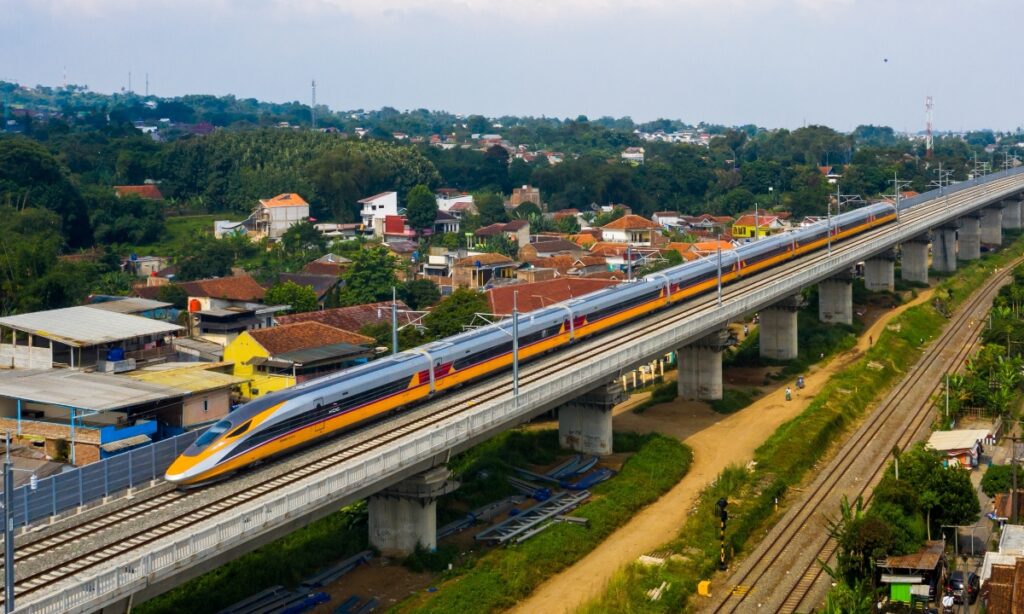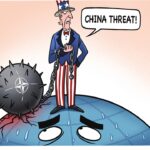With Southeast Asia’s infrastructure projects attracting attention from the Western developed countries, China may face some competition when it comes to strengthening infrastructure cooperation with Southeast Asian countries. However, China’s advantages lie in construction technology and quality, so regional cooperation momentum is unlikely to be affected.
Rail transit systems in the region are projected to grow by 20 percent to extend to more than 1,350 kilometers by the end of 2024 from the level as of January 2023, showed a Nikkei analysis examining commuter rail networks in the major cities across Thailand, Vietnam, the Philippines, Malaysia and Indonesia.
The projection represents a microcosm of Southeast Asia’s booming demand for better infrastructure, especially rail transits. With the region’s huge demographic dividend and unique geographical advantages, the Southeast Asian market is considered to be one of the most important and dynamic in the world, and the need for economic development has boosted demand for traditional infrastructure projects, such as fast rail transits.
China is known for its remarkable edge in infrastructure expansion, so complementarities between China and Southeast Asia in terms of infrastructure cooperation have borne growing fruit over the years. China is the only country to have all the categories listed in the UN industrial classification system. It has a complete industrial chain when it comes to infrastructure construction, giving it strong competitive advantages, whether from the perspective of construction technology or cost controls.
Since the launch of the iconic Belt and Road Initiative (BRI) in 2013, China and Southeast Asian countries have co-invested in more than 22 large-scale infrastructure projects. For instance, the Jakarta-Bandung high-speed railway, a landmark project under the BRI that connects Indonesia’s capital Jakarta and another major city Bandung, will be the first high-speed railway in Southeast Asia. It is also the first overseas high-speed railway project that fully uses Chinese railway systems, technology and industrial components.
These infrastructure projects have helped promote closer transport connectivity among Southeast Asian economies and accelerated economic and trade cooperation between China and the fastest developing region in the world.
Despite the past successes, China also faces some competition for winning infrastructure projects in Southeast Asia, particularly from the US, Japan and Europe, as well as the headwinds caused by the US-led geopolitical interference.
The past few years saw Japan, the US and the EU roll out infrastructure programs that aim to rival the BRI, some of which tilted toward projects in Southeast Asia. Also, the US pledge to build high-quality, high-standard infrastructure projects in the so-called Indo-Pacific region has attracted the interest of some countries in the region.
In the face of these evolutions as well as challenges, the only option for China is to stick to its peculiar advantage in infrastructure build-up. Ultimately, the market will make the choice that suits the region’s needs. Regarding non-market political interferences from the US and its allies, China needs to actively deal with them to minimize their negative impact on infrastructure projects.
Western stigmatization of BRI projects has, to some extent, led to concerns over Chinese-invested projects, which some in Southeast Asia worry may undermine their economic security and diplomatic independence, as claimed by the Western media.
But such concerns are unfounded, and it is the US and its allies, not China, that has a history of using economic projects to influence other countries’ internal affairs. China only needs to address these geopolitical concerns in a timely manner.
The Japanese and European colonists once built railways in Southeast Asia many years ago, but they did it for territorial aggression. By comparison, China’s infrastructure construction under BRI is closely aligned with local development needs, as evidenced by the China-Laos Railway.
Vigilance is warranted to guard against the West’ playing geopolitical games to denigrate China’s strengthened infrastructure cooperation with Southeast Asia countries. China could continue to rely on its outstanding building technology and efficiency to win more infrastructure projects in the region and elsewhere.
(Global Times)




